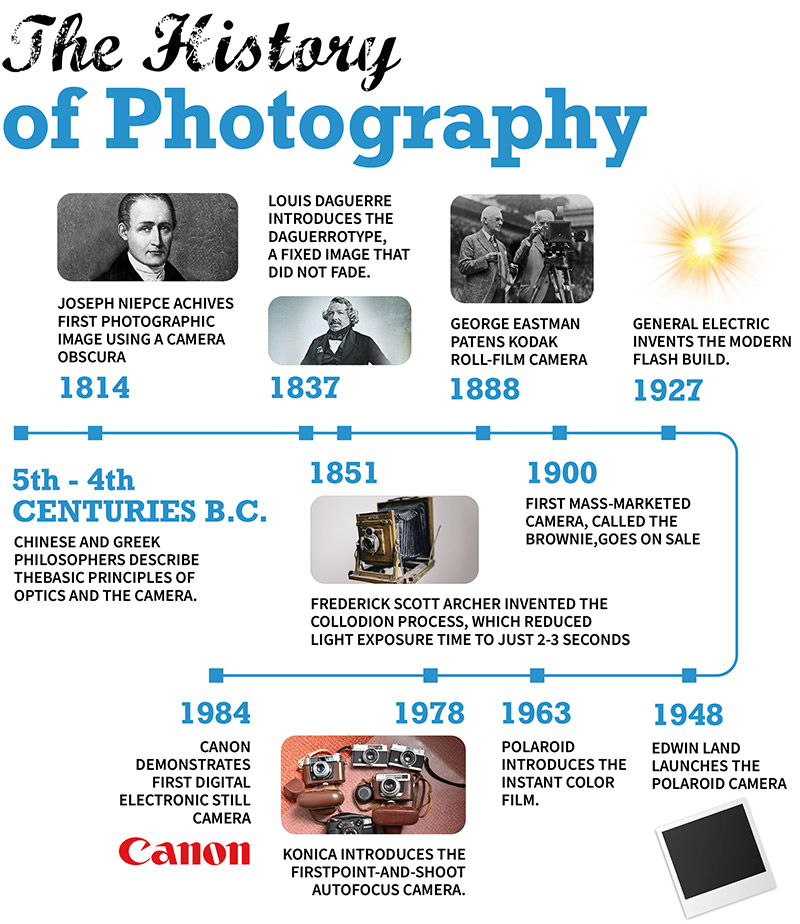


The word photography is derived from two Greek words, Phos, which means "writing with light" and means "light." Two fundamental concepts—camera obscura image projection and the fact that some materials are visibly changed by exposure to light—were discovered at the outset of photography's development. Before the 18th century, there were no artefacts or descriptions that would suggest an attempt to capture images using light-sensitive materials.
The 1990s saw the commercial launch of computer-based electronic digital cameras, which quickly transformed photography. Traditional film-based photochemical techniques lost ground during the first decade of the twenty-first century as people began to recognise the benefits of the new technology and as the image quality of reasonably cost digital cameras kept becoming better. Taking images (and immediately uploading them online) has evolved into a common daily activity all across the world, especially since cameras have become a basic function on smartphones.
Johann Heinrich Schulze used a bottle of a light-sensitive slurry to capture cut-out letters about the year 1717, but it seems he never considered how to make the findings last. Thomas Wedgwood made the first successfully documented, albeit unsuccessful, attempt at permanently preserving camera images in 1800. Although Wedgwood and his colleague Humphry Davy did make detailed photograms as a result of their efforts, they were unable to correct the images.
This article treats the historical and aesthetic aspects of still photography. For a discussion of the technical aspects of the medium, see photography, technology of. For a treatment of motion-picture photography, or cinematography, see motion picture, history of, and motion-picture technology.
Reviews of photography's place in the arts have been heavily influenced by this notion of its purported objectivity. Because of its early dependency on technology, photography was occasionally dismissed as a mechanical art. However, photography is not the automatic process that a camera implies it to be. A talented photographer can infuse creativity into the mechanical reproduction process, even if the camera typically only allows the photographer to show real objects and not imagined or interpretative viewpoints. Various lenses and filters can alter the image. Another factor is the kind of sensitive material that was employed to capture the image. Variations in development can also alter the contrast between highlights and shadows.
"One might compare the art of photography to
the act of poiting."
-JOHN SZARKOWSKI
Joseph Nicéphore Niépce captured the first photograph ever with a camera in 1826. It is believed that this image, simply titled "View from the Window at Le Gras," is the oldest surviving photograph ever found.19-Jun-2021
